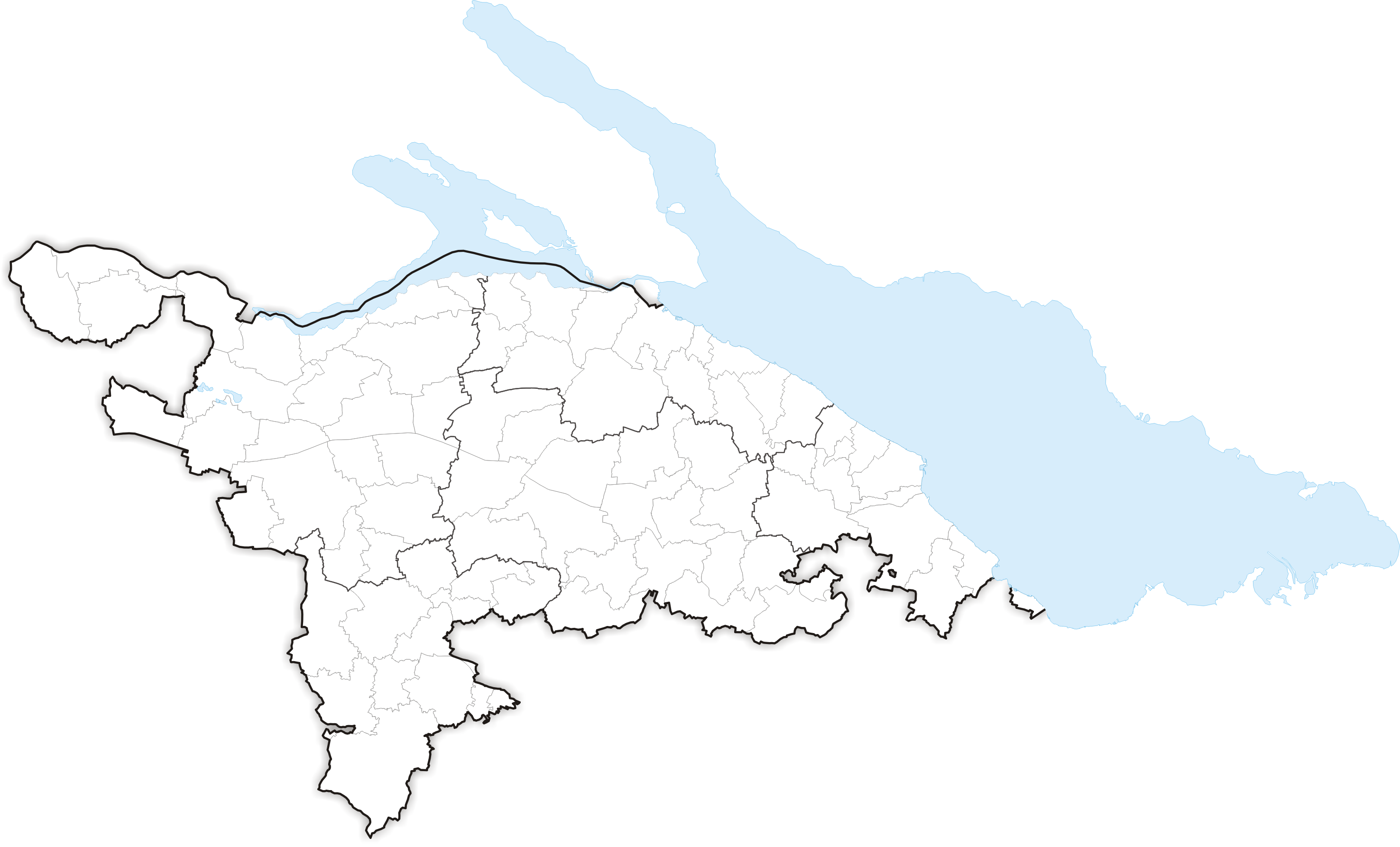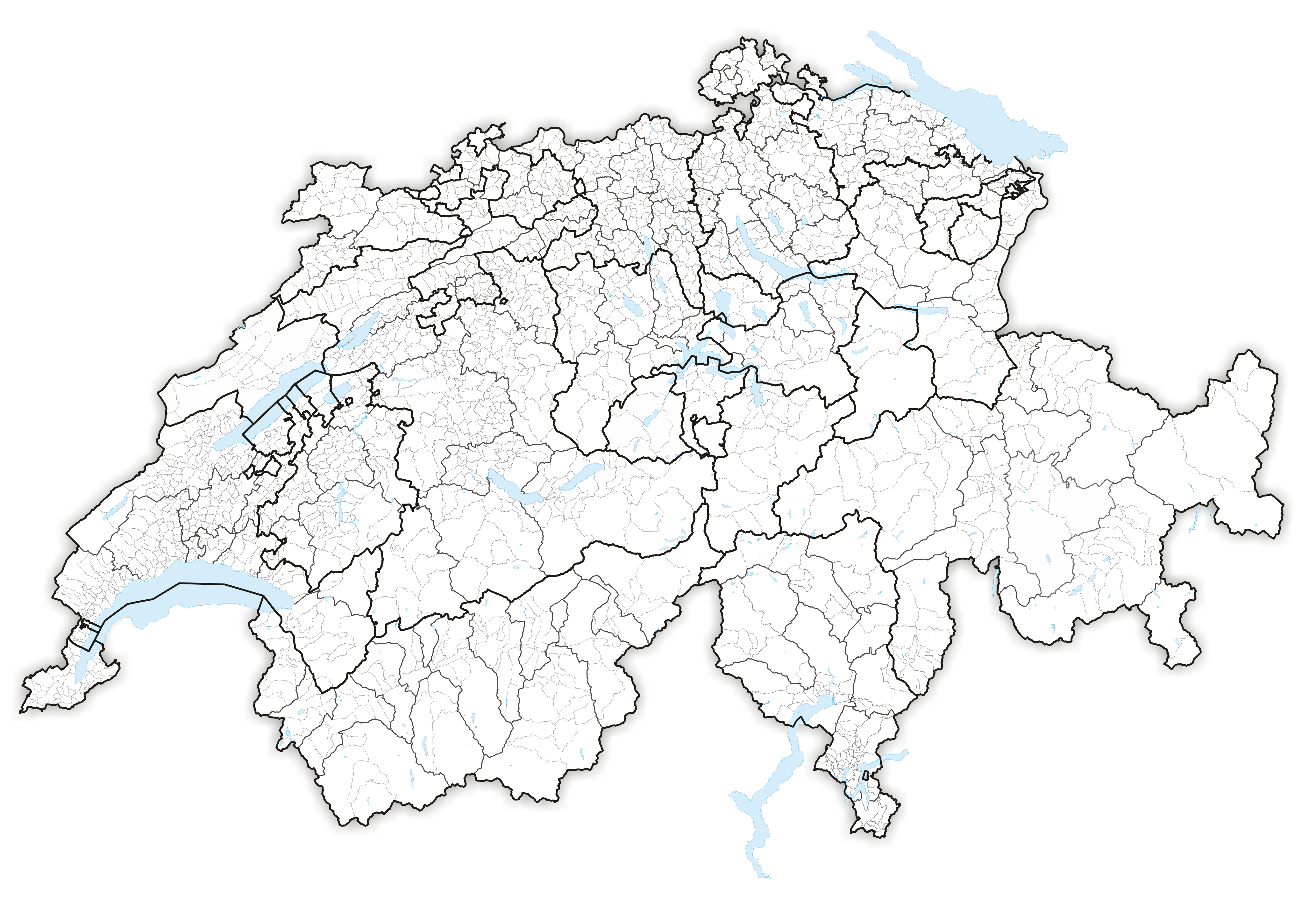|
Thurgau
Thurgau (; ; ; ), anglicized as Thurgovia, and formally as the Canton of Thurgau, is one of the 26 cantons forming the Swiss Confederation. It is composed of five districts. Its capital is Frauenfeld. Thurgau is part of Eastern Switzerland. It is named after the river Thur, and the name ''Thurgovia'' was historically used for a larger area, including part of this river's basin upstream of the modern canton. The area of what is now Thurgau was acquired as subject territories by the cantons of the Old Swiss Confederacy from the mid 15th century. Thurgau was first declared a canton in its own right at the formation of the Helvetic Republic in 1798. The population, , is . In 2007, there were a total of 47,390 resident foreigners, constituting 19.9% of the population. History In prehistoric times the lands of the canton were inhabited by people of the Pfyn culture along Lake Constance. During Roman times the canton was part of the province ''Raetia'' until 450, when Alemanni s ... [...More Info...] [...Related Items...] OR: [Wikipedia] [Google] [Baidu] |
Frauenfeld
Frauenfeld (Alemannic German, Alemannic: ''Frauefäld'') is the capital of the Cantons of Switzerland, canton of Canton of Thurgau, Thurgau in Switzerland. The official language of Frauenfeld is (the Swiss variety of Standard) Swiss Standard German, German, but the main spoken language is the local variant of the Alemannic German, Alemannic Swiss German (linguistics), Swiss German dialect. History Early history The earliest traces of human settlement are several La Tène culture, La Tène era graves to the east of Langdorf. The Switzerland in the Roman era, Roman road from Oberwinterthur (''Vitudurum'') to Pfyn ran through what is now the ''Allmend'' in Frauenfeld. Two Roman villas were discovered in Thalbach and Oberkirch. The villa seems to have become the focal point of the later settlement of Oberkirch. On the ruins of the villa, an Early Middle Ages cemetery was built, and by the 9th century, the Oberkirch church was built. Perhaps as a result of royal donation in th ... [...More Info...] [...Related Items...] OR: [Wikipedia] [Google] [Baidu] |
Cantons Of Switzerland
The 26 cantons of Switzerland are the Federated state, member states of the Switzerland, Swiss Confederation. The nucleus of the Swiss Confederacy in the form of the first three confederate allies used to be referred to as the . Two important periods in the development of the Old Swiss Confederacy are summarized by the terms ('Eight Cantons'; from 1353 to 1481) and ('Thirteen Cantons', from 1513 to 1798).rendered "the 'confederacy of eight'" and "the 'Thirteen-Canton Confederation'", respectively, in: Each canton of the Old Swiss Confederacy, formerly also ('lieu/locality', from before 1450), or ('estate', from ), was a fully sovereignty, sovereign state with its own border controls, army, and currency from at least the Treaty of Westphalia (1648) until the establishment of the Swiss federal state in 1848, with a brief period of centralised government during the Helvetic Republic (1798–1803). The term has been widely used since the 19th century. "" The number of canton ... [...More Info...] [...Related Items...] OR: [Wikipedia] [Google] [Baidu] |
Neunforn
Neunforn is a Municipalities of Switzerland, municipality in the district of Frauenfeld (district), Frauenfeld in the Cantons of Switzerland, canton of Thurgau in Switzerland. History Neunforn is first mentioned in 962 as ''Niuvora''. In 963 a court was mentioned in the village. The Freiherr of Teufen sold his property in Neunforn to Töss Monastery in 1250. The High, middle and low justice, high and low courts in Niederneunforn were merged in 1500 and in 1554 both courts were acquired by Stokar from Schaffhausen. From 1694 until 1798 the courts were owned by Zurich. The parish included Oberneunforn, Niederneunforn, Wilen and Burghof. In 1265, the parish was given as a donation to Töss Monastery, and was incorporated into the abbey in 1291. The Reformation reached and converted Neunforn in 1525. During the Protestant Reformation, Zurich closed Töss Monastery and took over the parish rights in Neunforn. Zurich retained the right to appoint the preacher in the parish until ... [...More Info...] [...Related Items...] OR: [Wikipedia] [Google] [Baidu] |
Grand Council Of Thurgau
The Grand Council of Thurgau () is the legislature of the canton of Thurgau, in Switzerland. Thurgau has a unicameral legislature. The Grand Council has 130 seats, with members elected every four years. The council has the unique feature in Switzerland of convening in two different locations: the town hall of Frauenfeld in the summer and that of Weinfelden in the winter. History The Grand Council was created in 1803 by the Act of Mediation, which established Thurgau as a Swiss canton. It then counted 100 members who served five-year terms. The council met for the first time on 14 April 1803 at the town hall of Frauenfeld. The cantonal constitution of 1831 introduced a system of two annual sessions, one taking place in Frauenfeld in the winter and the other in Weinfelden in the summer. In 1869, a new cantonal constitution made the number of seats dependent on the size of the population and shortened the parliamentary term to three years. In 1966, the duration of the legislatur ... [...More Info...] [...Related Items...] OR: [Wikipedia] [Google] [Baidu] |
List Of Cantonal Legislatures Of Switzerland
This is a list of cantonal legislatures of Switzerland. Each canton has a democratically elected cantonal legislature, as well as elected members of the Federal Assembly. The cantonal legislatures are elected for four years, except in Fribourg, Vaud, Geneva and Jura, which elect their legislatures for five years. The largest legislature, in Zürich, has 180 members, whilst the smallest, in less-populous Appenzell Innerrhoden, has only 49 members. Appenzell Innerrhoden is also the only legislature that is non-partisan. All other legislatures operate party political systems. The Swiss People's Party (SVP/UDC) is the largest party in nine legislatures, The Centre (DM/LC) is the largest in eight, the FDP.The Liberals (FDP/PLR) is the largest in seven and the Social Democratic Party (SP/PS) is the largest in one. Two cantons, Appenzell Innerrhoden and Glarus, hold ' as their highest legislative body. Under this system, a form of direct democracy, all adult citizens may atten ... [...More Info...] [...Related Items...] OR: [Wikipedia] [Google] [Baidu] |
Lake Constance
Lake Constance (, ) refers to three bodies of water on the Rhine at the northern foot of the Alps: Upper Lake Constance (''Obersee''), Lower Lake Constance (''Untersee''), and a connecting stretch of the Rhine, called the Seerhein (). These waterbodies lie within the Lake Constance Basin () in the Alpine Foreland through which the Rhine flows. The nearby '' Mindelsee'' is not considered part of Lake Constance. The lake is situated where Germany, Switzerland, and Austria meet. Its shorelines lie in the German states of Baden-Württemberg and Bavaria; the Swiss cantons of St. Gallen, Thurgau, and Schaffhausen; and the Austrian state of Vorarlberg. The actual locations of the country borders within the lake are disputed. The Alpine Rhine forms, in its original course ( Alter Rhein), the Austro-Swiss border and flows into the lake from the south. The High Rhine flows westbound out of the lake and forms (with the exception of the Canton of Schaffhausen, Rafzerfeld and Bas ... [...More Info...] [...Related Items...] OR: [Wikipedia] [Google] [Baidu] |
Hohgrat
The Hohgrat (also known as ''Groot'') is a mountain located on the border between the Swiss cantons of Thurgau Thurgau (; ; ; ), anglicized as Thurgovia, and formally as the Canton of Thurgau, is one of the 26 cantons forming the Swiss Confederation. It is composed of five districts. Its capital is Frauenfeld. Thurgau is part of Eastern Switzerland. I ... and St. Gallen. Reaching a height of 996 metres above sea level, it is the highest point of the canton of Thurgau. The mountain is densely forested, except the eastern (St. Gallen) side, which includes some limestone cliffs. References Canton Thurgau - Geographic Locationthurgau-turismus.ch External linksHohgrat on Hikr Highest points of Swiss cantons Mountains of the canton of St. Gallen Mountains of Thurgau Appenzell Alps Mountains of Switzerland Mountains of Switzerland under 1000 metres St. Gallen–Thurgau border {{StGallen-mountain-stub ... [...More Info...] [...Related Items...] OR: [Wikipedia] [Google] [Baidu] |
Municipalities Of The Canton Of Thurgau
The following are the 80 municipalities of the canton of Thurgau, as of 2009. List *Aadorf *Affeltrangen * Altnau * Amlikon-Bissegg *Amriswil *Arbon *Basadingen-Schlattingen * Berg (TG) * Berlingen * Bettwiesen * Bichelsee-Balterswil *Birwinken * Bischofszell *Bottighofen * Braunau * Bürglen (TG) *Bussnang *Diessenhofen * Dozwil *Egnach * Erlen *Ermatingen *Eschenz * Eschlikon * Felben-Wellhausen * Fischingen *Frauenfeld *Gachnang * Gottlieben *Güttingen * Hauptwil-Gottshaus *Hefenhofen *Herdern * Hohentannen * Homburg *Horn * Hüttlingen *Hüttwilen *Kemmental *Kesswil *Kradolf-Schönenberg *Kreuzlingen *Langrickenbach * Lengwil * Lommis * Mammern * Märstetten *Matzingen * Müllheim * Münchwilen (TG) * Münsterlingen *Neunforn *Pfyn * Raperswilen * Rickenbach (TG) * Roggwil (TG) *Romanshorn *Salenstein *Salmsach * Schlatt (TG) *Schönholzerswilen *Sirnach * Sommeri * Steckborn *Stettfurt * Sulgen *Tägerwilen * Thundorf *Tobel-Tägerschen *Uesslingen-Buch * Uttwil * Wagenha ... [...More Info...] [...Related Items...] OR: [Wikipedia] [Google] [Baidu] |
Districts Of Switzerland
Districts of Switzerland are a political subdivision for cantons of Switzerland, cantons. In the federally constituted Switzerland, each canton is completely free to decide its own internal organisation. Therefore, there exists a variety of structures and terminology for the subnational entities between canton and municipalities of Switzerland, municipality, loosely termed districts. Most cantons are divided into ''Bezirke'' (German for districts, singular ''Bezirk''). They are also termed ''Ämter'' (Canton of Lucerne, Lucerne, singular ''Amt''), ''Amtsbezirke'' (Canton of Bern, Bern, ''Amtsbezirk''), ''district'' (in French) or ''distretto'' (Ticino and part of Canton of Graubünden, Graubünden). The ''Bezirke'' generally provide only administration and court organization. However, for historical reasons districts in cantons Grisons and Canton of Schwyz, Schwyz are their own juristic person, legal entities with jurisdiction over tax and often have their own Landsgemeinde. Se ... [...More Info...] [...Related Items...] OR: [Wikipedia] [Google] [Baidu] |
List Of Cantonal Executives Of Switzerland
This article lists the cantonal executives of Switzerland. Each canton of Switzerland has its own executive body, as well as legislative body. The Federal Council is the executive of the Swiss federal government, and is included for purposes of comparison. The cantonal executives are collegial bodies, each with 5 or 7 members. They are generally called ' (Executive Council) in German-speaking cantons and ' (State Council) in French-speaking cantons. General structure Presidents of the executives The above mentioned collegial bodies are formally chaired by a president. However those presidents are primus inter pares, that is a ''first among equals'' in the council; other than presiding over meetings and the ability to cast tie-breaking votes, the president only holds ceremonial powers. In the list below, unless otherwise noted, the official name of the office of president of the respective cantonal executive is ''Regierungsratspräsident'' (Government council president ... [...More Info...] [...Related Items...] OR: [Wikipedia] [Google] [Baidu] |
Thur (Rhine)
The Thur is a river in north-eastern Switzerland and a tributary of the High Rhine (). Name The name was first attested in 886 A.D. as Dura. In the 13th century, the spelling Turia appears, and in the 14th century Thûr, Tûr. The name has been interpreted as an Old European hydronymy, Old European hydronym, from *durâ or *duriâ “river” from the Indo-European root *dhu “to run, to hurry”. Turgowe, a village in the Duchy of Alamannia, was named after a body of water. The first mention of the village is slightly older than the earliest mention of the body of water. Around 745, it was cited in the village of Durgaugen. This led to the eventual naming of the canton as Thurgau. Course The river's source is near Wildhaus in the south-east of the Toggenburg region in the cantons of Switzerland, canton of canton of St. Gallen, St. Gallen, south of Säntis mountain (Alpstein). Near Unterwasser, it forms Thur waterfalls, two waterfalls. Subsequently, it flows mainly nort ... [...More Info...] [...Related Items...] OR: [Wikipedia] [Google] [Baidu] |






